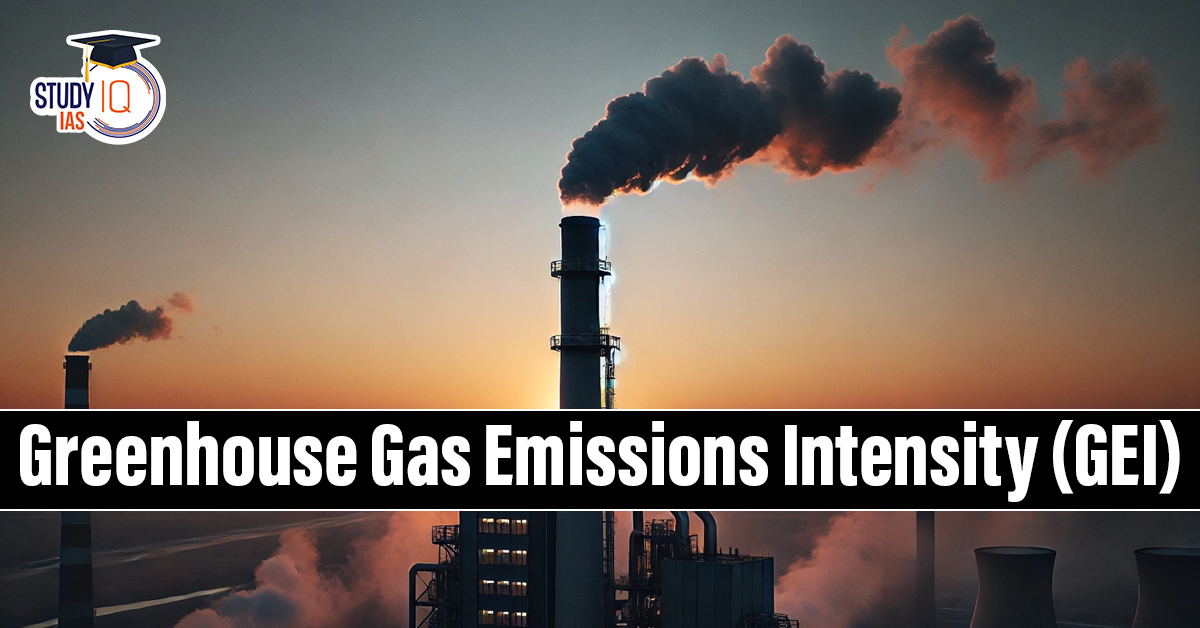Table of Contents
Context: The Union government has notified draft Rules introducing targets for the reduction of greenhouse gas (GHG) emissions by “obligated entities” in energy-intensive sectors and industries.
Greenhouse Gas Emissions Intensity (GEI)
- Greenhouse Gases (GHGs) are gases that trap heat in the atmosphere and contribute to the “greenhouse effect” that raises surface temperature on Earth.
- Greenhouse Gas Emissions Intensity (GEI) refers to the amount of GHGs emitted per unit of product output.
- It is measured in tCO2e (tonnes of carbon dioxide equivalent).
- It accounts for all greenhouse gases based on their global warming potential.
- GHGs include:
- Natural: Water vapour, carbon dioxide (CO2), methane (CH4), nitrous oxide (N2O), ozone (O3).
- Synthetic: Chlorofluorocarbons (CFCs), Hydrochlorofluorocarbons (HCFCs).
Key Provisions of the Draft Greenhouse Gas Emissions Intensity (GEI) Target Rules
- Baseline Year: 2023-24.
- Reduction Targets Set for: 2025-26 and 2026-27.
- Coverage: Highly energy-intensive sectors.
- Industries covered: 282 industrial units across 4 sectors.
Compliance and Penalties
- Industries must meet the assigned GEI reduction targets.
- Penalties will apply for non-compliance.
- Rules will be enforced by the Central Pollution Control Board (CPCB).
How GEI targets will help industries
- Industries will clearly know how much they need to cut emissions.
- Industries achieving reductions can earn carbon credits.
- Carbon credits can be sold to other industries or used to meet their own obligations.
Importance of Setting GEI Targets
- GEI targets will push industries towards low-carbon growth.
- It will support the Paris Agreement Commitment. India aims to reduce the emissions intensity of GDP by 45% by 2030 (compared to 2005 levels).
- Industries will adopt Cleaner fuels (e.g., switching from coal to biomass) & Energy-efficient manufacturing processes.
| Carbon Trading Mechanism in India |
|


 List of National Parks in India 2025, Ch...
List of National Parks in India 2025, Ch...
 Bonnet Macaques: Habitat, Features, Beha...
Bonnet Macaques: Habitat, Features, Beha...
 Periyar Tiger Reserve, Map, Flora, Fauna...
Periyar Tiger Reserve, Map, Flora, Fauna...

























